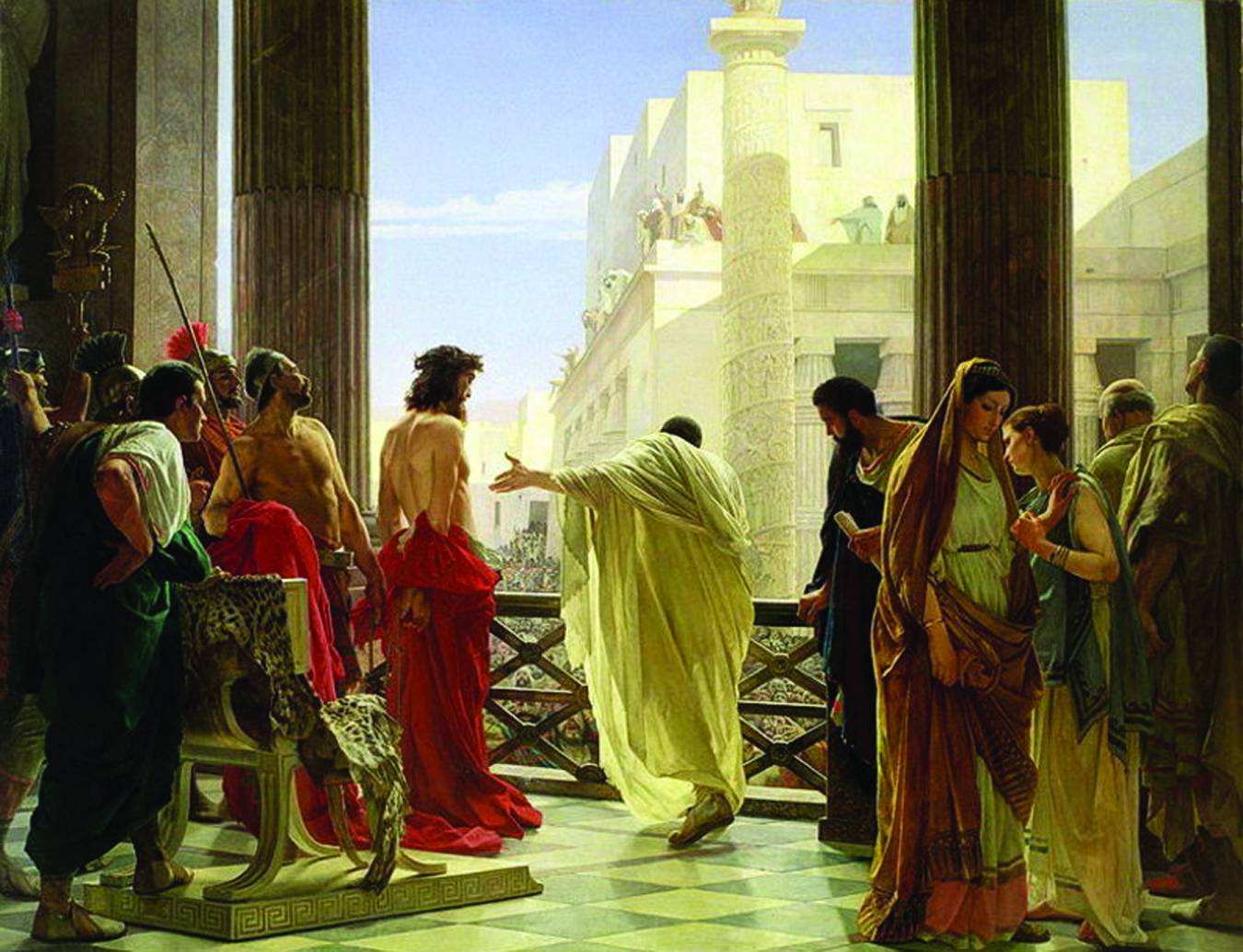By David Hankins
“Pilate had a notice prepared and fastened to the cross. It read, JESUS OF NAZARETH, THE KING OF THE JEWS. Many of the Jews read this sign, for the place where Jesus was crucified was near the city, and the sign was written in Aramaic, Latin, and Greek. The chief priests of the Jews protested to Pilate, ‘Do not write “The King of the Jews,” but that this man claimed to be king of the Jews.” Pilate answered, ‘What I have written, I have written.’” – John 19:19-22, NIV
Anatole France’s tale “The Procurator of Judea” features an elderly Pontius Pilate reminiscing with an old friend about their time in Judea decades before. When the friend inquires about Jesus who was crucified by Pilate, he murmured, “Jesus – of Nazareth. I cannot call Him to mind.”
The author is trying to suggest the unlikely possibility that Jesus’ crucifixion was so incidental that the governor probably wouldn’t remember Him. But, even if Pilate could not recall the tumultuous events accompanying Jesus’ death, the name Pontius Pilate is inextricably woven with the name of Jesus of Nazareth.
In history, Pilate is always and only remembered for his connection to Jesus’ crucifixion as is so eloquently stated in the Apostles’ Creed, “and He suffered under Pontius Pilate.”
And the relationship is heightened by the placard Pilate had placed on Jesus’ cross.
Why did Pilate describe Jesus’ offense as “The King of the Jews?” Why was he unwilling to modify the statement even when the religious leaders protested? Was he just stubborn? Was he trying to aggravate the Jews for all the aggravation they gave him?
Whatever the case, as the old folks say, Pilate said a mouthful. Whether knowingly or unknowingly, Pilate proclaimed the Gospel.
Pilate’s sign declared more than he ever knew about Jesus!
When Pilate asked, “Are you the king of the Jews?” Jesus answered, “It is as you say.” And that is the truth even if Pilate didn’t believe it. Jesus is the promised one, the anointed one , the Messiah and the savior of the Jews and the world. Pilate’s placard became God’s placard. It is the same Gospel we declare today. Whether men believe or not, Jesus is the King.
Pilate’s sign revealed more than he ever intended about himself.
Jesus’ crime was there for all to see. It was in three languages-all could know the truth. As He struggled along the via dolorosa, everyone could read, “Jesus of Nazareth, the King of the Jews.”
Except that was no real crime, and Pilate had already determined that Jesus was innocent of breaking Roman law.
But ignoring his wife’s warning, he gave into political expediency, and callousness, and cynicism. He sentenced the innocent Son of God to death, and thus Pilate’s heart is laid bare. The accused becomes the judge and the judge becomes the accused.
Pilate washed his hands and said, “I’m not guilty of this man’s death.” But, oh, he was!
There were plenty of hands in Pilate’s basin that day: There were the soldiers who nailed Jesus to the cross and said I’m just doing my job; there were the critics who said let him save himself if he is the Chosen One; and, there were the would-be disciples who shouted “Hosanna” on Sunday and “crucify him” on Friday.
And there are many hands in Pilate’s basin today. We scrub, scrub, scrub as we say, “I’m not guilty!” But we are guilty. This is the Gospel: All we like sheep have gone astray but the Lord has laid on him the iniquity of us all.
Pilate’s sign offered more than he ever dreamed about salvation!
That day, many people walked by the dying savior and read the sign above his head. Many read and walked away, never understanding, never caring. But some who read were changed for eternity.
The two thieves who were crucified with him, one on either side, exemplified the response. One railed at his defeat; one rallied to his defense. One bemoaned his weakness; one believed his power. One found death in death; one found life in death.
What was it the dying thief rejoiced to see? Had he seen Jesus performing miracles some time earlier? Did he remember the teachings of this one come from God?
Did he understand the name on the sign means “God saves?” He pled, “Lord Jesus, when you come into your kingdom, remember me.” He found salvation.
No wonder: “The dying thief rejoiced to see that fountain in his day; And there may I, though vile as he, wash all my sins away!”
It is quite ironic, is it not? Unbelieving Pilate – cynical and vicious Pilate – became the first evangelist to show a lost sinner how to be saved. He put it on a sign: JESUS OF NAZARETH, THE KING OF THE JEWS. This is the Gospel. It was declared unwittingly by Pilate. It is declared unapologetically by Scripture. Rejoice!
David Hankins is the executive director of the Louisiana Baptist Convention.




